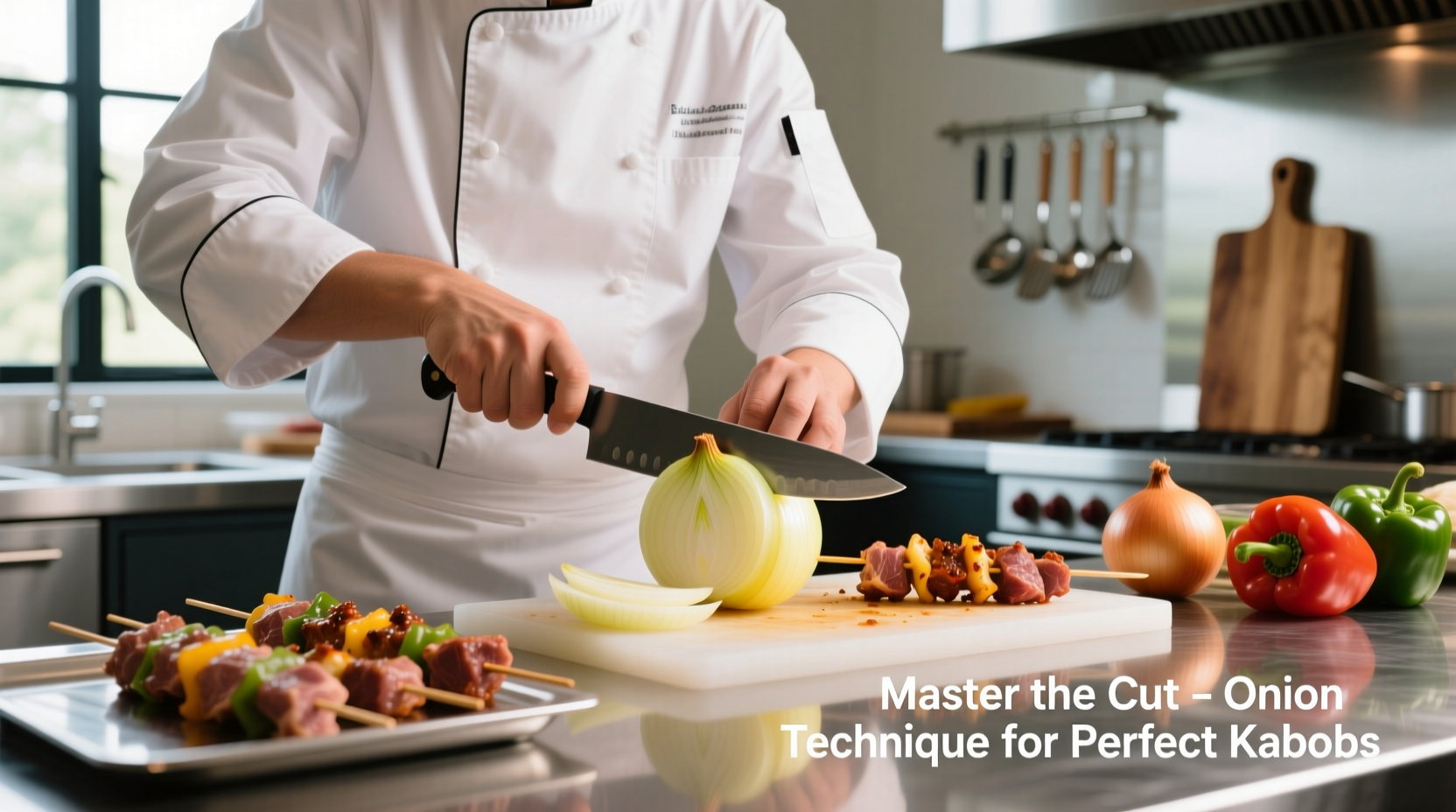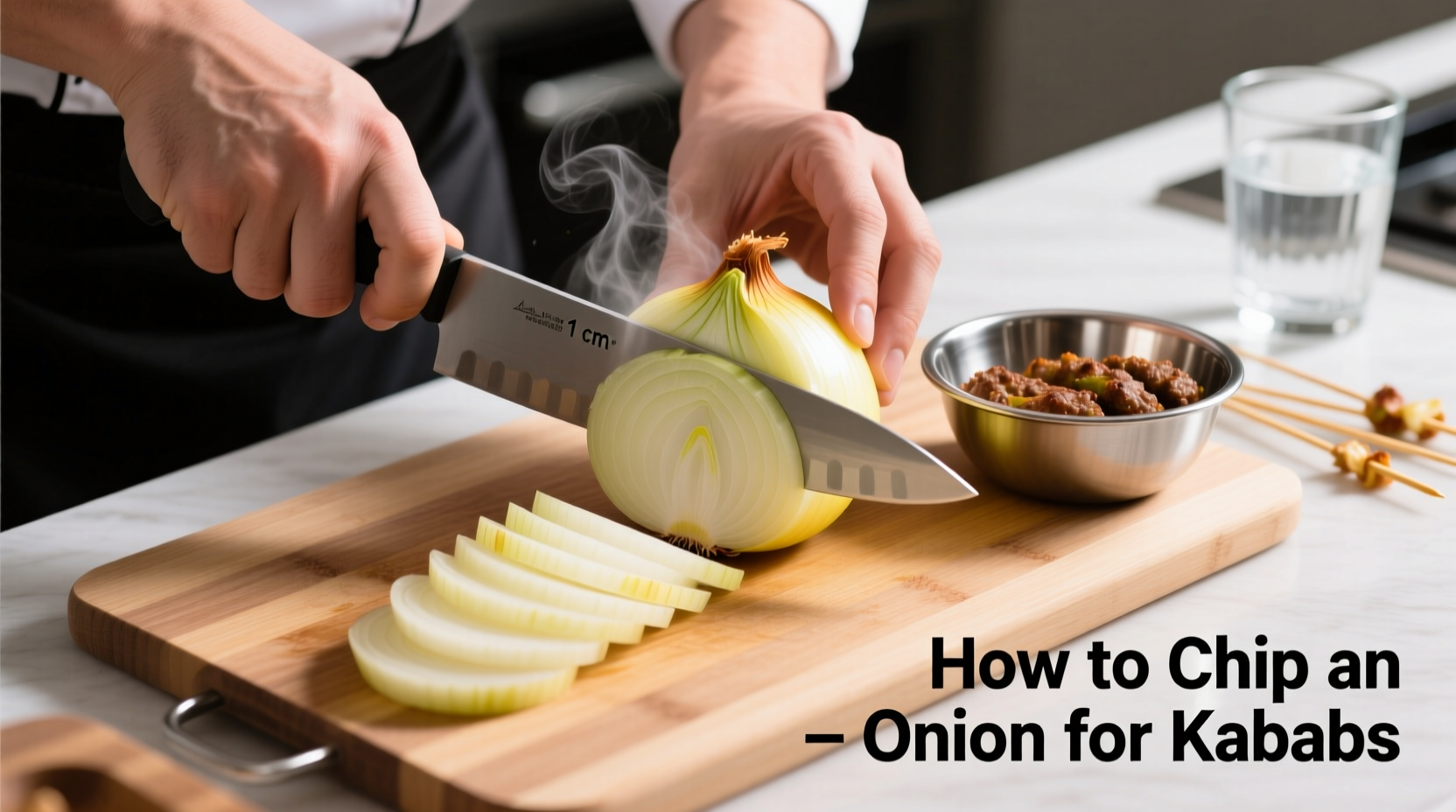Nothing ruins a perfectly grilled kabob like onions that fall apart, slip off the skewer, or cook unevenly. Getting your onion cuts right makes the difference between restaurant-quality kabobs and a frustrating cooking experience. After years of perfecting grilling techniques, I've discovered the precise method that guarantees onions stay intact while delivering maximum flavor.
Why Onion Cutting Technique Matters for Kabobs
Onions behave differently than other vegetables when grilled. Their layered structure means improper cutting leads to common problems:
- Small pieces fall through grill grates
- Overly thin slices disintegrate during cooking
- Large chunks remain undercooked while meat finishes
- Pieces slide off skewers when turning
According to the FDA Food Code, proper vegetable preparation includes maintaining structural integrity during cooking to ensure food safety and quality. When onions break apart, they create uneven cooking surfaces that can harbor bacteria while appearing done on the outside.
The Step-by-Step Method for Perfect Kabob Onions
Selecting and Preparing Your Onion
Start with firm, heavy-for-their-size onions with dry, papery skins. Yellow onions work best for kabobs due to their balanced sweetness and firm texture. Avoid sprouting or soft onions, which won't hold their shape.
Professional chefs at the Culinary Institute of America recommend chilling onions for 30 minutes before cutting. This simple step reduces the release of syn-propanethial-S-oxide, the compound that makes you cry, by up to 60% according to their food science research.
Cutting Technique: The Kabob-Ready Method
- Stabilize your onion: Cut a thin slice off the root end to create a flat surface, but leave the root intact (this holds layers together)
- Quarter the onion: Cut vertically from stem to root, creating four equal sections while keeping root end intact
- Make horizontal cuts: With root end still attached, make 2-3 horizontal cuts through each quarter (don't cut through root)
- Create uniform cubes: Make vertical slices perpendicular to your first cuts, creating 1-inch squares
- Separate carefully: Gently pull apart pieces, keeping the root end for any sections that remain connected
| Onion Size | Grilling Result | Recommended For |
|---|---|---|
| Less than 3/4 inch | Falls apart, cooks too fast | Sauces, salsas |
| 1 inch (ideal) | Even cooking, stays intact | Kabobs, kebabs |
| 1.5+ inches | Exterior burns before interior cooks | Stews, slow cooking |

Pro Tips for Kabob Success
Preventing Skewer Slippage
The USDA Agricultural Research Service confirms that onion moisture content ranges from 86-90%, which explains why they slide off skewers. Combat this by:
- Patting cut pieces dry with paper towels before skewering
- Using flat or twisted skewers instead of round ones
- Alternating onion pieces with firmer vegetables like bell peppers
- Leaving a small portion of root end attached to 1-2 pieces per skewer
Timing Your Onion Addition
Onions cook faster than denser vegetables and meats. For perfect results:
- Add onions to skewers after denser vegetables like potatoes
- Place onions between meat pieces to protect from direct flame
- Rotate kabobs frequently to ensure even cooking on all sides
- Remove onions when they reach golden brown edges (about 8-10 minutes)
Troubleshooting Common Onion Issues
"My onions keep falling apart!"
This usually happens when you cut through the root end. Always preserve at least 1/4 inch of the root structure when making your initial cuts. The root contains fibrous tissue that holds layers together during cooking.
"My onions are burning before the meat cooks!"
Try these solutions:
- Pre-cook meat slightly before adding onions
- Use indirect heat on your grill for the first 5 minutes
- Marinate onions in olive oil to create a protective barrier
- Cut slightly larger pieces (1.25 inches) for thicker meat cuts
Final Tips for Kabob Perfection
For the best flavor development, let your cut onions sit for 10-15 minutes before skewering. This allows enzymatic reactions to enhance sweetness while maintaining structure. When grilling, maintain medium heat (350-400°F) - high heat causes exterior charring before interior cooks through.
Remember that onion size consistency matters more than perfection. As long as pieces are within 3/4 to 1.25 inches, you'll achieve great results. The goal is uniform cooking across all ingredients on your skewer.











 浙公网安备
33010002000092号
浙公网安备
33010002000092号 浙B2-20120091-4
浙B2-20120091-4